Search Images
Browse Content (p. 1174)
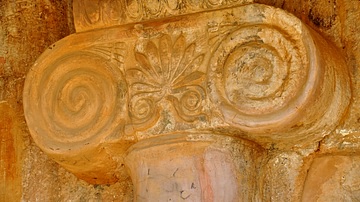
Image
Capital, Rock-Cut Tombs of Qizqapan
Detail showing the capital of the left-sided engaged column at the façade of the rock-cut tombs of Ashkawt-I Qizqapan (Kurdish: The Cave of the Ravisher or the Cave of the Raped/Abducted Girl). The capital is of an ionic-style and is composed...
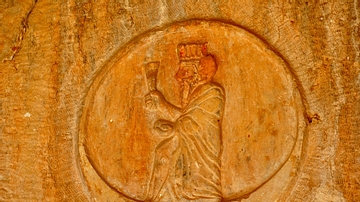
Image
God Roundel, Rock-Cut Tombs of Qizqapan
Detail of the relief carved at the façade of the rock-cut tombs of Ashkawt-i Qizqapan (Kurdish: The Cave of the Ravisher or the Cave of the Raped/Abducted Girl). This roundel, of a god emblem, lies above the entrance into the main burial...
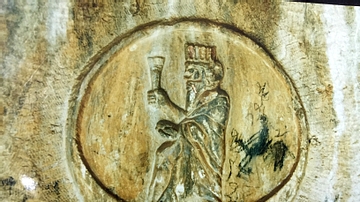
Image
Roundel Detail, Rock-Cut Tombs of Qizqapan
A close-up image of the central roundel of the divine emblem at the façade of the rock-cut tombs of Ashkawt-i Qizqapan (Kurdish: The Cave of the Ravisher or the Cave of the Raped/Abducted Girl). This image was shot just before the restoration/conservation...
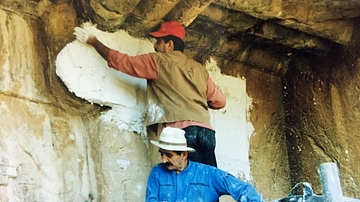
Image
Taking Moulds, The Rock-Cut Tombs of Qizqapan
Mr. Akam (a sculptor who still works at the Sulaymaniyah Museum) and Mr. Qadir (died last year in 2017, rest in peace) are doing the moulds of the replica of the façade of the rock-cut tombs of Ashkawt-i Qizqapan (Kurdish: The Cave of the...
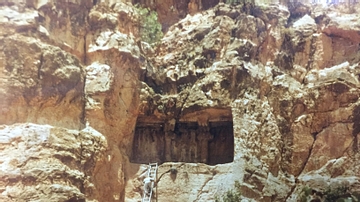
Image
Cliff Face, Rock-Cut Tombs of Qizqapan
The rock-cut tombs of Ashkawt-i Qizqapan (Kurdish: The Cave of the Ravisher or the Cave of the Raped/Abducted Girl). The “cave” is carved into the cliff of the mountain and is approximately 8 meters above the ground level; it seems that the...
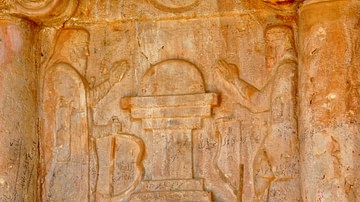
Image
Main Carving, Rock-Cut Tombs of Qizqapan
This is the main scene, carved between the engaged Iranian ionic-style columns and above the entrance into the main chamber of the rock-cut tombs of Ashkawt-i Qizqapan (Kurdish: The Cave of the Ravisher or the Cave of the Raped/Abducted Girl...
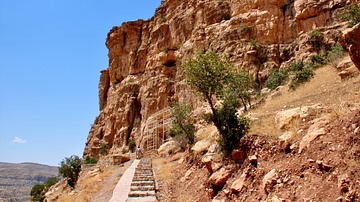
Image
Approach Path, Rock-Cut Tombs of Qizqapan
The road to Ashkawt-i Qizqapan (Kurdish: The Cave of the Ravisher or the Cave of the Raped/Abducted Girl), which lies in Chemi Rezan Valley, Sulaymaniyah Governorate, Iraqi Kurdistan. It is not a cave; it is a rock-cut tomb, which contains...
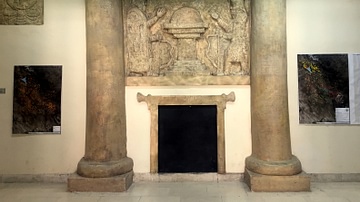
Image
The Rock-Cut Tombs of Qizqapan (Replica)
A modern replica of the façade of the rock-cut tombs of Ashkawt-i Qizqapan (Kurdish: The Cave of the Ravisher or the Cave of the Raped/Abducted Girl). The replica was made in late 2002 and was placed at the main entrance into the halls of...
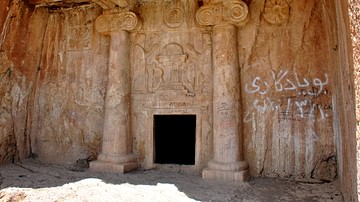
Image
Entrance, The Rock-Cut Tombs of Qizqapan
The façade and entrance into the rock-cut tombs of Ashkawt-i Qizqapan (Kurdish: The Cave of the Ravisher or the Cave of the Raped/Abducted Girl), which lies near Zarzi village and the Palaeolithic cave of Zarzi, Chemi Rezan Valley, Sulaymaniyah...
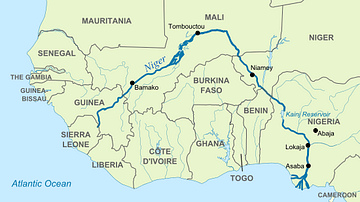
Image
Map of Niger River
The Niger River is the most important river in West Africa, and is the third longest river in Africa after the Nile River and Congo River. Known for its distinctive "boomerang" shape, the Niger River flows from the Guinea Highlands to the...